Sure, white noise machines are simple to use – but you do want to get the most from yours right? Maybe you just want privacy, concentrate without distractions, or sleep better. It’s helpful to know a few things first.
In this article, I’ll share:
- Where to put a white noise machine.
- White noise machine basics.
- How loud a white noise machine should be.
..and some other great info, too!
Contents
Where to put a white noise machine
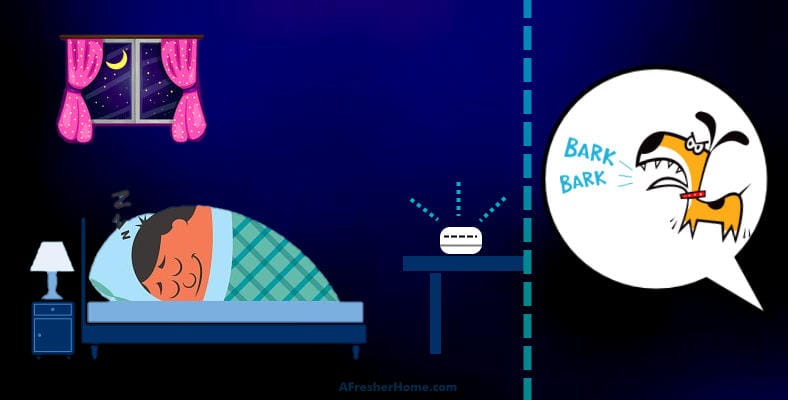
The recommendation from manufacturers is to place your noise machine several feet away from you. For best results, put it closer to where noise enters the room. As it’s further away from you, you’re able to have the volume set higher than you would with it right next to you. You may need more white noise machines if the sound is harder to block out completely.
The great news is that it’s really simple to use your white noise machine for the best results.
White noise machine placement diagram

Place your white noise machine in a convenient place away from your bed at least several feet and higher off of the floor if possible. Tabletops, nightstands, or even a chair placed fairly close to the room’s center can work well.
This is helpful for 2 reasons:
- Because you’ll need to adjust the volume to block outside sounds, if the machine is too close to you you’re likely to turn the volume down a lot which will affect its performance.
- If it’s placed on the floor, sounds may potentially enter more easily than if placed on a desk or table above the floor since the white noise won’t be able to block it well. Consider where you actually hear sounds entering the room.
Setting up a noise machine only requires a few steps: adjust the volume as you need to a level you find comfortable and that prevents you from noticing the distracting sounds you’re wanting to block. Generally speaking, I’ve found that fan sounds, brown noise, or the default “white noise” option often works best as they cover a wider range of sound frequencies they block.
What to put them on
Desks, tables, or nightstands are great places for them, also if you’re low on furniture, an unused chair or small shelf can be made to work. While you can use yours very close to your bed it’s almost never a good idea.
I recommend putting your white noise machine somewhere around 3 feet away. This gives it the opportunity to cover more of the room effectively. Also, try to avoid having it blocked off on one or more sides (like very close to a wall).
A white noise machine works best with some space for the sound to carry. Blocking off its output on one or more sides can hurt its performance in some cases.
Where to put a white noise machine for privacy
Therapy offices, business offices, libraries, or others
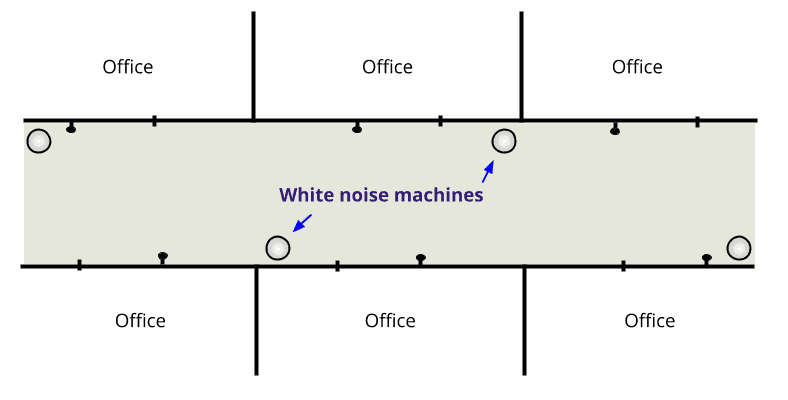
Here’s a real-world example I’ve seen used in a therapy office: placing the white noise machines in the hallway. The machines (2 for about every 3 offices or so) are placed in a staggered fashion on opposite sides of the hallway. Alternatively, you could get one for each office, placed off to the side and not directly near the therapist or client chairs.
How many white noise machines do you need?
You’ll need to consider the number of offices in your office suite when buying them. Marpac, a major manufacturer of some of the most popular ones, suggests one machine for roughly every 300 square feet of room size (that’s about a 10 x 30 foot room).
They can also be placed outside of the office in the hallway depending on your office suite’s floor plan. I’ve seen them placed in the hallway in between offices rather than in the offices themselves (although that of course works too). In that case, the therapists used one machine on each side for about every 3 office doors with about 4 used in total.
So I’d recommend:
- One machine per individual room OR
- 2 per hallway side, for every 3 rooms, if placed in the hallway
Work areas (cubicles and desks for example)

Space can definitely be tight when we’re talking about cubicles or desks at work or in a study room, etc. You’ll have to do your best to use a white machine in the following way:
- Try to keep it several feet away and raised above your desk if that’s possible.
- Be careful not to cover it or block off the sound it produces. Avoid keeping it in clutter, books, and other things that can reduce the white noise sound output level.
- In areas where there’s loud talking nearby it can be pretty tough to block out the sound. You may even need to consider picking up a 2nd unit to help.
One creative idea is to buy a very small add-on shelf that can be attached to your desk or cubicle wall to have it raised near eye level for the best results.
How do white noise machines work?

White noise machines (also called sleep or sound machines) come in two types based on how they work:
- Electronic (digital sound) models.
- Electromechanical models.
While they both do the same thing there are definitely some big differences between the two and the features they offer.
1. Electronic models
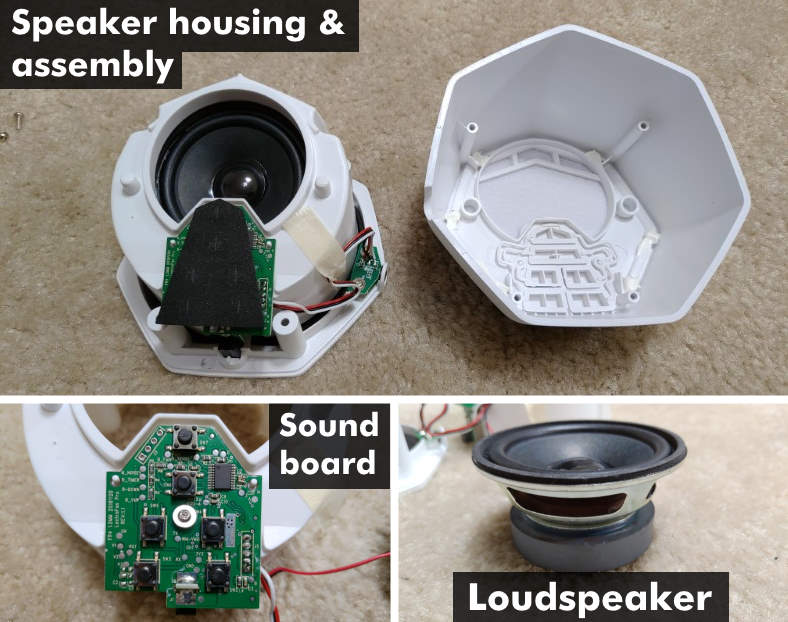
Electronic (also called “digital”) white noise machines use integrated circuit chips (ICs) to create noise patterns generated as a continuous pattern or stored as an audio file much like .MP3 music. Pre-stored sound patterns are generated and adjustable volume control is standard.
Some models have more options than others, offering special audio sounds like those of nature and rain, electric fans, and other versions of white noise to best suit your taste. Quite a few also have very nice features you can’t get in older designs, such as an adjustable off-timer or sound that fades to its normal volume rather than starting at full volume.
2. Electromechanical
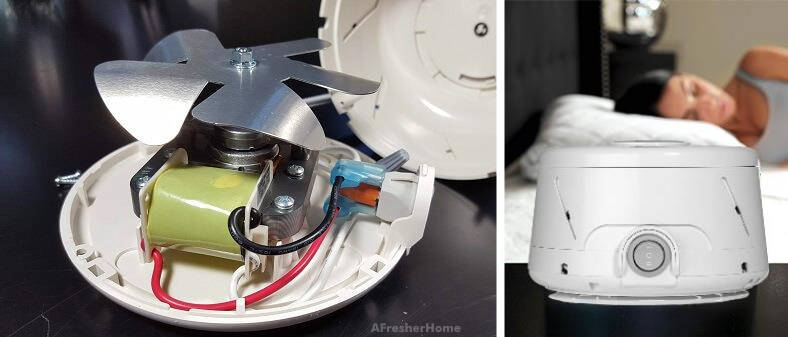
This type uses an older noise-generating design that’s not too unlike an electric fan. They’re simpler to use, too. While they’re less popular now they’re still widely used and a good choice for many people.
Electromechanical white noise machines use an electric motor to spin a small fan. This generates an airflow that moves through small vents and produces a soft white noise tone. Some allow for volume and some sound tone adjustment as well, although they’re not nearly as versatile as electronic models.
While they don’t have the options that solid-state models do, they’re super easy to use and still preferred by some people because of their sound. One benefit is how incredibly simple they are to use.
How white noise blocks sound

White noise machines work by creating a range of sounds that “mask”, or cover up, distracting sounds you normally can hear.
White noise machines produce a fairly wide range of sound frequencies that spreads across the range of many common sounds that bother us. As long as the volume of any inside or outside sound is equal to or less than the volume of noise made by the machine it can be effectively blocked and go unnoticed.
With a few exceptions, nearly all nearby sounds with low or moderate volume – traffic, conversations, coworkers – all the frequencies that we can hear can be blocked.
White noise machine vs fan white noise
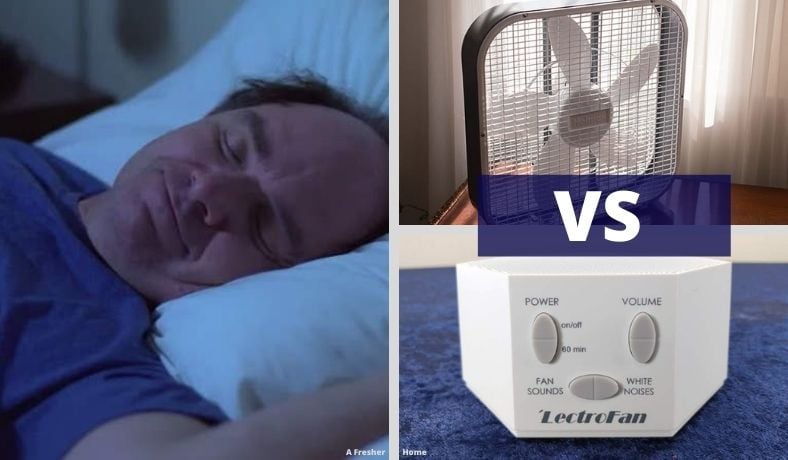
The honest truth is that some fans can be pretty darn good for white noise. Many box fans, for example, have a great “white noise” sound they generate that can block annoying sounds and also help you relax & sleep.
Unfortunately, they have drawbacks. White noise machines have several advantages over fans:
- White noise machines use a tiny bit of electricity compared to fans. For example, say 5 watts or less compared to the 25-65W of an electric fan.
- White noise machines offer adjustable volume and other sound options.
- Do you travel? Imagine trying to take a box fan with you! Noise machines are easy to take along with you.
- You can also find battery-powered or USB-powered white noise machines for added convenience. Some even have a headphone jack, too!
Ultimately, if you already use a fan for keeping cool, that may be good enough. However, I think you’ll find that white noise machines are a better buy overall and easier to deal with.
How loud should a white noise machine be?

The volume you need for a white noise machine depends on the volume of the sound you’re wanting to block out. Shop carefully as while some models have a fairly good amount of volume you can use (say around 100dB or so, which is fairly good) others can be a very different story!
As a general rule, I recommend at least 80dB volume available but more is definitely better. In most cases you’ll never need more than some average listening level like 60dB-70dB but when outside noise is pretty bad the additional potential volume can be great to have.
Here’s another important thing to know: not every manufacturer specifies the volume a white noise machine is capable of – in fact, not that many do. Bear a few things in mind when shopping:
- Electromechanical units are often fair to fairly good for volume but often don’t offer high volume output.
- Brand names offer better performance in this area and more volume steps (more volume up/down steps you can use).
- Budget models are usually fine for average noise levels or for rest or study but may not be a good choice for very noisy areas.
Before spending any money I’d recommend carefully checking buyer reviews to check for complaints about insufficient volume. It’s not typically a problem but if you have ever lived near someone yelling, playing loud music, or other outrageous noise you know just how annoying it can be!
Where to put a white noise machine in a baby room
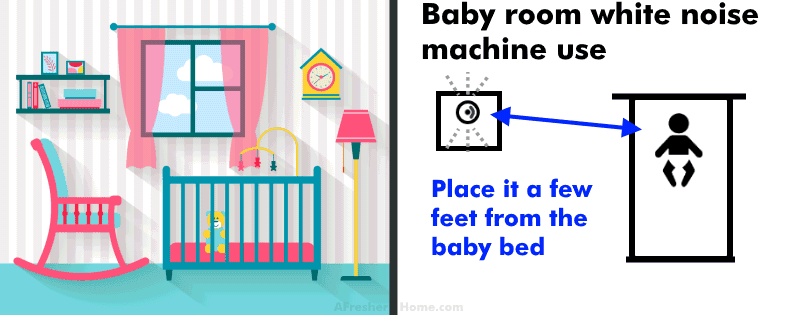
How far should a white noise machine be kept from a baby?
It’s pretty much the same as for adults: place the white noise machine several feet (3 feet is a good rule of thumb) from the baby’s bed or crib. One reason to do so is to avoid the need for having the volume set high near the baby.
White noise is not harmful by nature but the hearing of babies is vulnerable to harm when exposed to loud sounds for long periods of time. Never use your white noise machine near a baby at very high volumes. You shouldn’t need to, anyway.
Having the sound machine just a few feet away means it should (in reasonable circumstances) be fine somewhere around low to medium volume to help your child sleep well.


How about not wanting anyone to hear the noise i make?
Hi Franco. My apology for some reason sometimes I’m not getting notification that someone left a comment. Gosh! :(
To answer your question, it of course depends on the volume of the noise you’re making but my article should cover most cases. If your sitting upright (for example at a desk etc.) raising it above the floor, perhaps on an end table or desk etc., would be even better.
Generally speaking you want it between you and where other people will be.
my apartment is on a first floor and when ppl are waiting by elevator. they can listen everything from my apartment…. do you have something i can hang on wall or ceiling to destroy the noise outside ?
tnx
Hi Aaron it depends on how loud the sound in your apartment is. If it’s relatively loud a white noise machine may not be able to help. A box fan set to high speed may be able to, however, if it’s loud sounds.
How loud are the outside sounds? If it’s relatively mild, yes a white noise machine like the Lectrofan Classic can help mask it. You should be able to hang it to a screw or nail or alternatively, using good quality Velcro fasteners.
I feel your pain as I have very good hearing and things like that have driven me crazy in the past! Best regards.